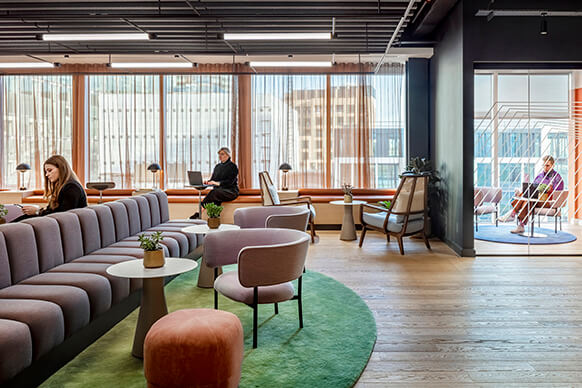Envisioning a Collaborative Hub
Cognizant, a global professional services company, had grown organically over many years and its London real estate portfolio spanned the city. As leases for their larger offices neared expiration, Cognizant’s leadership decided to bring everyone together under one roof. With a desire to successfully integrate different work cultures and explore using space in novel ways, they asked our team to reimagine the modern workplace before embarking on the physical design of a new London headquarters.
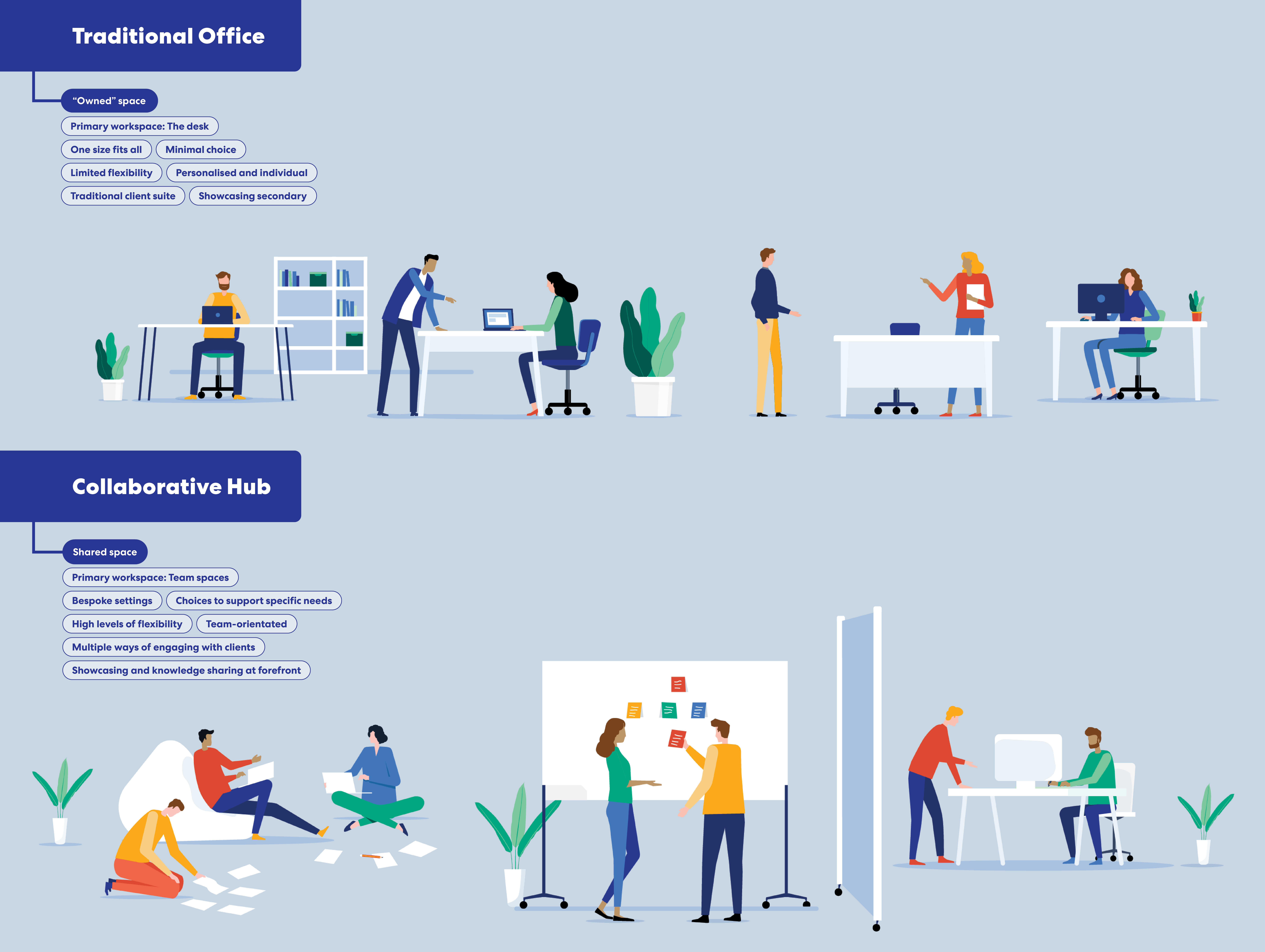
A combination of objective and subjective research strategies helped us understand how we could support Cognizant’s journey towards a more desirable workplace experience. Cognizant’s leadership team shared input via workshops, and selected leaders, business area representatives, and service line staff participated in a series of interviews.
Most staff were already accomplishing heads-down work at home or within their clients’ offices, so the headquarters needed to prioritise in-person and hybrid collaboration. Cognizant envisioned a workplace dedicated to their team- and client-based activities instead of open plan desking and closed meeting rooms, and the new space would need to facilitate the radical shift from 1400 seats across seven sites to 450 seats in a single location.
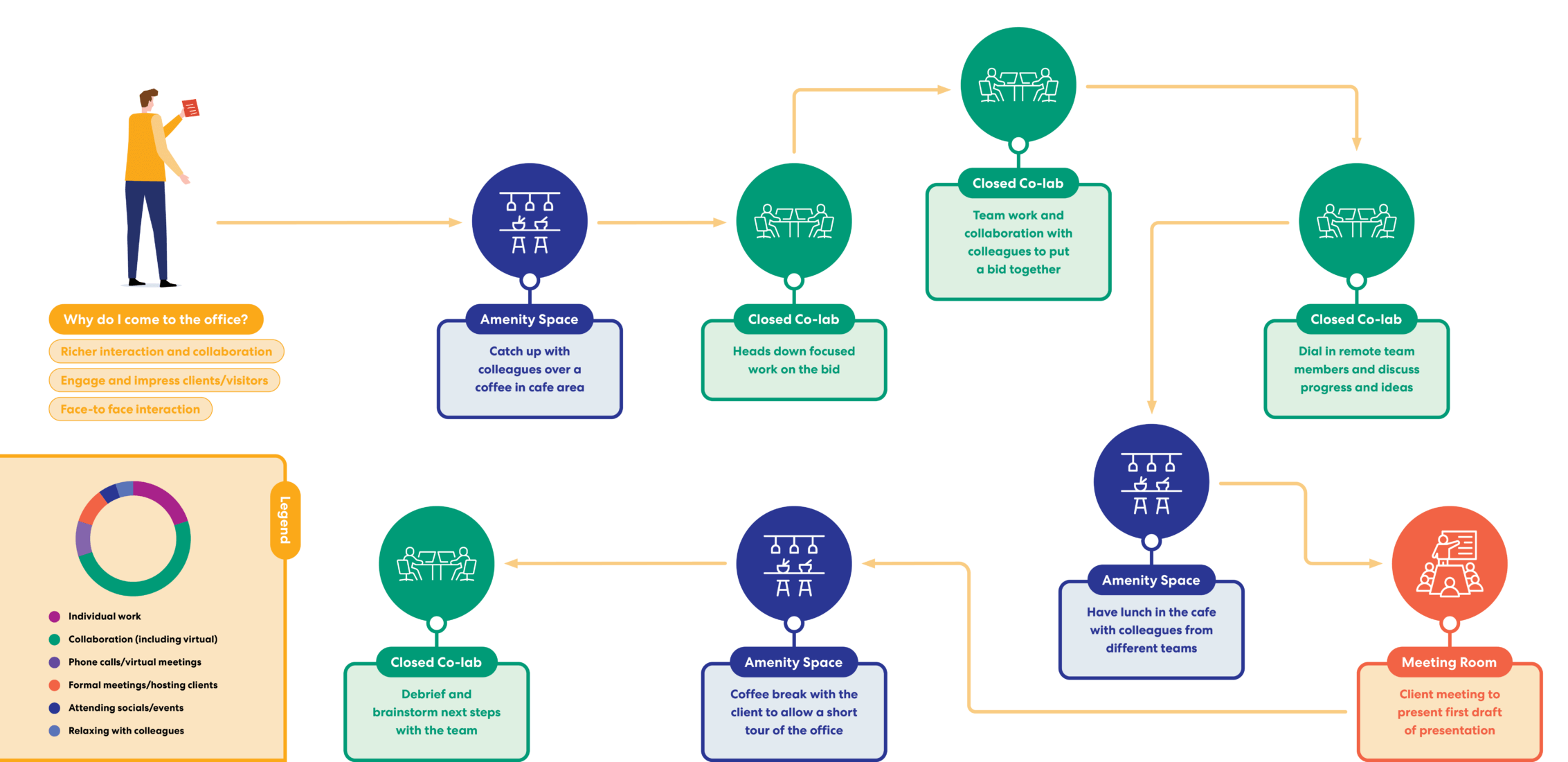
Insights shared in workshops and interviews revealed that the new building would need space for two major in-person functions: team experiences and client experiences. The headquarters’ primary purpose would be to provide space for interactions such as large project kick offs, engaging with clients, showcasing the Cognizant brand, celebrating milestones, recruiting and onboarding new employees, collaborating, and meeting with clients.
Personas and “day in the life” scenarios demonstrated that spaces would need to support teams and individuals at a range of scales and interaction styles. We performed scenario testing to explore how various spaces would work for different user types and determined that collaborative spaces should be augmented by more traditional settings like workstations and support areas.
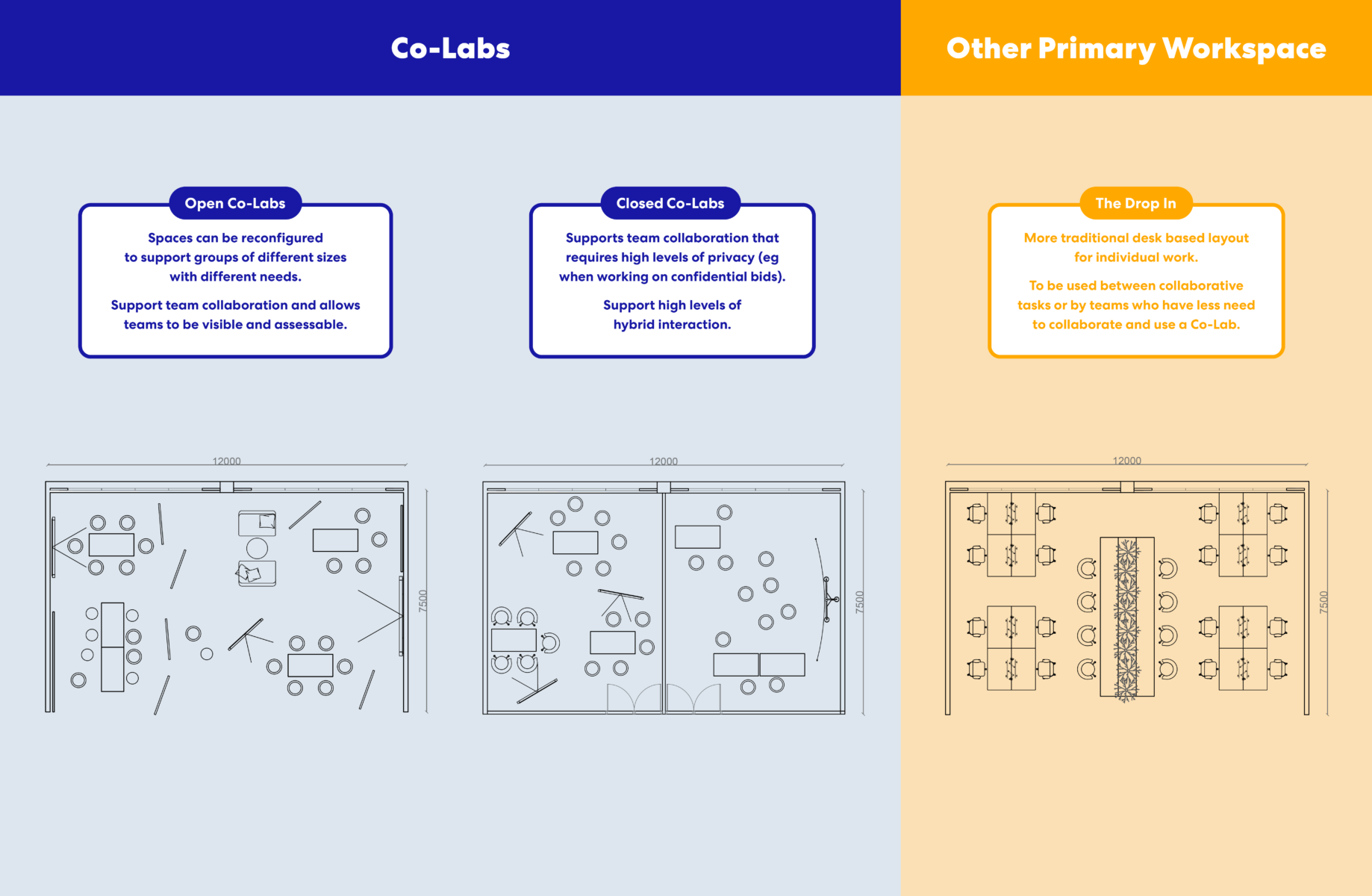
Based on our research and analysis, we recommended the following space types:
Co-labs are reconfigurable collaborative workspaces that incorporate flexible furniture to support all forms of team-based working. Employees can reconfigure spaces on a day-to-day basis to accommodate large or small teams, and areas are booked as needed rather than being “owned” by any group or department.
The client and visitor space hosts meetings and collaborative work with reconfigurable “stages” that bring ideas to life during the pitching process.
The internal showcase is a set of physical elements like show-and-tell walls and digital displays that are geared toward sharing knowledge, promoting awareness of news and achievements, and instilling pride.
The executive suite consists of offices, support areas, and an eight-person meeting room, all of which are available for general use when not needed by the executive team.
Although much of Cognizant’s onboarding, training, and recruitment work happens online, our research revealed the need for an academy and recruitment space. We envisioned two training rooms with a removable wall that would create a single large room to accommodate 50 people, along with technology to support online participants.
These novel space types, along with more traditional features such as drop-in desks, a client showcase in the welcome/reception area, and amenities such as a café and contemplation room, fulfill the needs of a highly collaborative workforce.
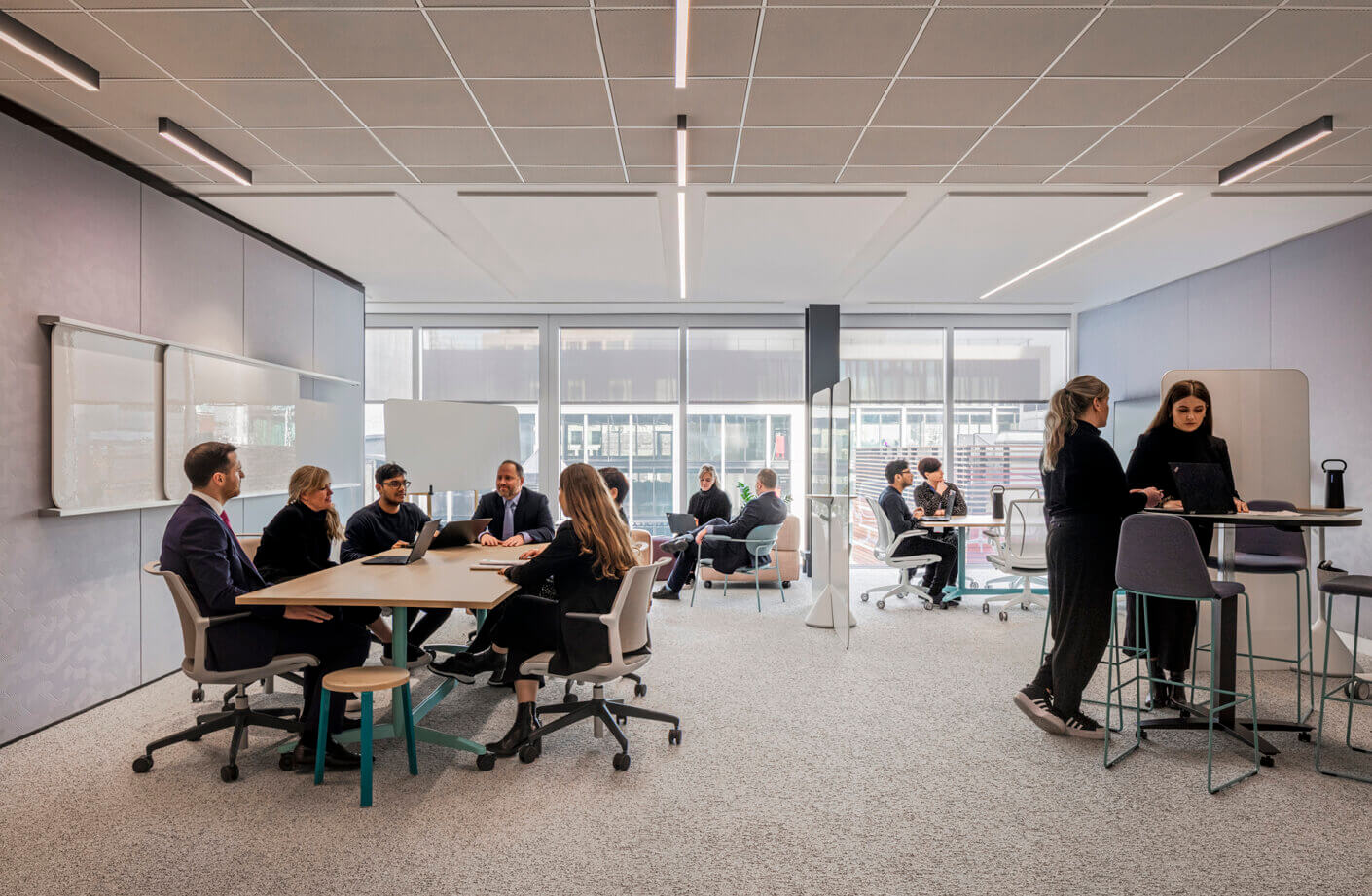
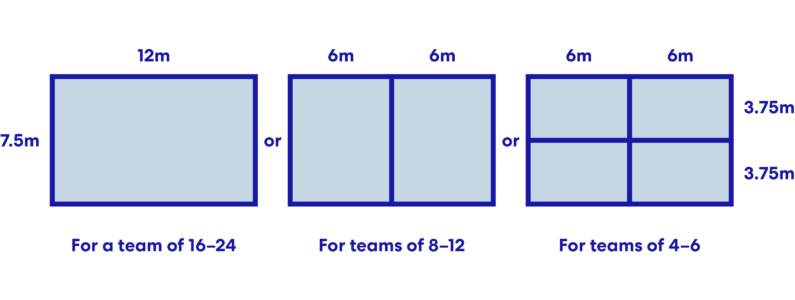
280 Bishopsgate in London isn’t an office; it’s a new way of working that brings entire industry ecosystems together in a collaborative hub for Cognizant. Cross-disciplinary clients, partners, startups, and employees meet, work, and deliver projects with the help of cutting-edge technology. In the short term, teams can tailor spaces to suit specific use cases. In the long term, its adaptability will help the entire organisation respond to evolving work patterns and expectations.


